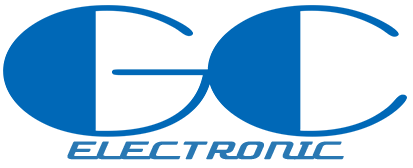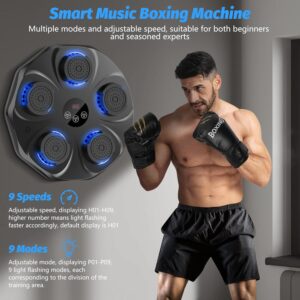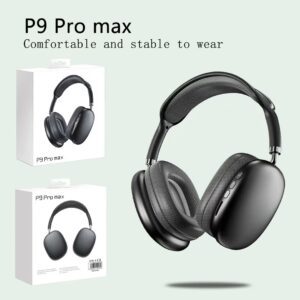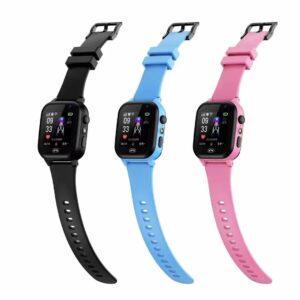Wie Sie wissen, wird das Geschäft immer schwieriger. Nur die Veränderung, wie man sich verändert, beginnen wir mit der Betrachtung des Produkts über die Zeitachse
Verschiedenen Daten zufolge hat Chinas Wirtschaft einen Knotenpunkt erreicht und ist vom Aufzugsmodus in den Klettermodus übergegangen.
Warum? Wie einfach ist es, mit dem Aufzug zu fahren, warum muss man harte Felsen erklimmen, man könnte versehentlich auf den Fuß des Berges fallen.
Das liegt daran, dass das chinesische BIP in den letzten 40 Jahren schnell gewachsen ist, mit einer durchschnittlichen jährlichen Wachstumsrate von etwa 9,5 %, zeitweise sogar mehr als 10 %.
Der Wettbewerb zwischen Unternehmen ist ein Kampf “Wer greift am schnellsten”.
Wer schnell zugreift, bekommt mehr; Wer langsam zugreift, bekommt weniger. Der Boden ist voller Gold, entweder deins oder meins.
Aber jetzt? Das BIP im Jahr 2019 könnte bei einigen 6 % liegen.
Aus diesem Grund hat jeder das Gefühl, dass das Geschäft immer schwieriger wird, weil es in der Vergangenheit ein inkrementelles Geschäft war und sich nicht um die Aktie kümmerte.
Der aktuelle Wettbewerb zwischen Unternehmen dürfte zu einem Produktstreit im Lager führen.
Was sollten Sie also tun, wenn Sie sich verändern möchten, wenn Sie in diesem neuen Wettbewerb mitmachen und erfolgreich klettern möchten?
Ich schlage vor, dass Sie bei der Herstellung von Produkten das Konzept der Zeitachse berücksichtigen.
Wenn Sie sich der Zeitleiste anschließen und die Veränderungen in der Geschichte aus der Vogelperspektive betrachten, werden Sie feststellen, dass sich die Welt ständig weiterentwickelt und niemals stehen bleibt.
Zu diesem Zeitpunkt hat Ihr Produkt, genau wie jeder von uns und jedes Unternehmen, seinen eigenen Lebenszyklus.
1. Wie verläuft der Produktlebenszyklus?
Wie verläuft der Produktlebenszyklus?
Wir unterteilen es in vier Phasen: die Investitionsperiode, die Wachstumsperiode, die Reifeperiode und die Rückgangsperiode.
1.1. Investitionszeitraum
Eines Tages haben Sie das Gefühl, Einblick in die Bedürfnisse der Benutzer zu haben, beschließen, Zeit und Ressourcen zu investieren und mit der Herstellung eines Produkts zu beginnen.
Aber in diesem Zeitraum verdienen Sie kein Geld, da Sie noch keine Benutzer haben.
Benutzer zahlen nicht für Ihre Träume, sondern nur für ihre Bedürfnisse.
Dieser Zeitraum wird als Investitionszeitraum bezeichnet.
1.2. Wachstumsphase
Warten Sie, bis Sie endlich die zweite Phase erreicht haben, die Wachstumsphase.
Herzlichen Glückwunsch, Ihr Produkt erfüllt wirklich die Bedürfnisse einiger Benutzer, anstatt dabei zu bleiben “was denken Sie” Bühne.
Tatsächlich fallen die meisten Startups in die Investitionsphase. Was bedeutet das für Sie, die Sie in die Wachstumsphase eingetreten sind?
Das bedeutet, dass Sie sich schnell Zugang zum Markt verschaffen und den Umfang des Marktes weiter ausbauen müssen.
1.3. Reife
Durch die Ausweitung des Marktumfangs, die es mehr Nutzern ermöglicht, Sie und den Wert Ihrer Produkte zu erkennen, sind Sie in eine reife Phase eingetreten.
In diesem Stadium werden Sie feststellen, dass Sie endlich Geld verdient haben und sich Ihre Gewinne zu stabilisieren beginnen.
Zu diesem Zeitpunkt ist es für Sie am wichtigsten, Ihre Lieferkette zu optimieren, Ihre Produktionsstruktur zu optimieren und Produktfunktionen zu optimieren.
1.4. Niedergangsperiode
Ob es Ihnen gefällt oder nicht, Ihr Produkt wird definitiv in die vierte Phase, die Rezessionsphase, eintreten.
Erwarten Sie eine solche Möglichkeit nicht, Sie können ein Produkt herstellen, das 100 Jahre halten kann. Coca-Cola ist ein seltener Fall, aber das ist nicht möglich.
Daher müssen Sie am ersten Tag Ihrer Entscheidung, ein Produkt herzustellen, klar darüber nachdenken, wie Ihr Produkt letztendlich sterben wird.
Dies sind die vier Phasen des Produktlebenszyklus.

Sie können auch sehen, dass es in diesem Modelldiagramm zusätzlich zu diesen 4 Zyklen auch mehrere farbige, durchgezogene und gestrichelte Linien gibt.
Warum diese Zeilen hinzufügen?
Da der Produktlebenszyklus für Unternehmen in verschiedenen Phasen unterschiedliche Prioritäten hat, habe ich sechs besonders wichtige Linien darauf gezeichnet, um dieses Modell klarer zu erklären.
Die sechs Linien sind: Umsatz, Kosten, Preis, Innovationsfähigkeit, Wettbewerber und Gewinn.
Lassen Sie uns zunächst über die Preislinie sprechen.
Was sind die Preismerkmale des Produkts?
Das Besondere daran ist, dass der Preis nach der Produktion Ihres Produkts deutlich sinkt.
Man könnte sagen:
Nicht wahr? Sie sehen, der Preis für Huawei-Handys ist in den letzten zwei Jahren immer höher geworden.
Indeed, the prices of Huawei mobile phones have been getting higher and higher in the past two years. That’s because Huawei’s new phones are more expensive than the old ones.
The price of each of its new phones has gone down over time.
So this is the characteristic of the price, the price of most products is all the way down.
Let’s talk about the competitor line.
You must have discovered that this line only started in the growth period and reached its peak in the mature period.
Why? Is there no competition during the investment period?
Ja, niemand konkurriert wirklich mit Ihnen, weil Sie kein Geld verdienen. Viele Leute beobachten Sie an Ihrer Seite, beobachten, wie Sie Ihr Geld auf dem Bildungsmarkt ausgeben und Muster erkunden. Daher wird dieser Zeitraum auch Monopolzeit genannt.
Aber sobald Ihr Produkt anfängt, Geld zu verdienen, in die Wachstumsphase eintritt und die Reifephase erreicht, müssen die Konkurrenten in Scharen auf Sie zukommen.
Wenn wir ein Unternehmen gründen, werden Sie feststellen, dass Sie Ihre Konkurrenten nicht spüren, weil Sie immer andere herausfordern.
Aber sobald man Geld verdient, wird man zum Herausforderer und zum Helfer, der viel Geld dafür ausgibt, Geschäftsmodelle und Produktformen auszuprobieren und anderen dabei zu helfen, alles zu retten.
Dadurch übernimmt der Konkurrent direkt das Ergebnis Ihres Versuchs und kämpft mit Ihnen.
Es klingt grausam, aber das ist grausamer geschäftlicher Wettbewerb.
Was bedeuten diese Linien Umsatz, Kosten, Innovationsfähigkeit und Gewinn?
Keine Sorge, ich möchte diese Zeilen näher erläutern, wenn ich im Folgenden die verschiedenen Phasen des Produktlebenszyklus erläutere.
Wenn wir als Unternehmer einen Zeitplan hinzufügen und Produktänderungen aus der Vogelperspektive betrachten, worauf sollten wir uns in den verschiedenen Phasen konzentrieren?
Das ist für uns das Wichtigste.
Als nächstes werden wir darüber sprechen, welche Linie je nach den verschiedenen Phasen des Produktlebenszyklus die wichtigste ist.
2. Was ist der wichtigste Investitionszeitraum?
Was ist der wichtigste Investitionszeitraum?
Welche Linie von Preis, Umsatz, Kosten, Innovationsfähigkeit und Gewinn ist im Investitionszeitraum am wichtigsten?
Kreativität.

In dieser Zeit ist die Innovationsfähigkeit für ein Startup-Unternehmen am wichtigsten.
Es gibt oft Unternehmerfreunde, die sagen, dass Innovation und R&D-Fähigkeiten erfordern eine starke Reserve an Mitteln und Talenten, die nur von großen Unternehmen bereitgestellt werden können.
Ist es das wirklich?
Nicht wirklich. Wenn Sie sorgfältig nachdenken und das Höchste anstreben, werden Sie feststellen, dass jede Branche und jedes Produkt um Sie herum tatsächlich eine Neugestaltung wert ist.
Wir sagen oft, dass der Ausgangspunkt aller Geschäfte der Nutzen der Verbraucher ist. Geben Sie vor, das Produkt oder der Benutzer zu sein?
Wer nur Produkte hat, wird irgendwann eliminiert;
Menschen, die Benutzern folgen, iterieren ständig.
Alle Produkte dienen der Lösung von Problemen. Das Problem ist, dass es einen Preis gibt.
Welches Problem löst das Auto beispielsweise? Es geht darum, Menschen von A nach B zu schicken. Wie lief es früher? Wagen. Ich nehme die Kutsche und die Summe der verschiedenen Kosten (Kosten, Zeit, Komfort, Stolz usw.) von A nach B sind die Gesamtkosten dieser Sache.
Früher kostete die Fahrt mit der Kutsche 10 Yuan. Rechnet man jedoch alle versteckten Kosten (Zeit, Komfort, Stolz usw.) hinzu, kann es tatsächlich einen Gesamtwert von 100 Yuan haben.
Beachten Sie, dass dies der Schlüssel ist: Viele Menschen sehen nur 10 Yuan, aber nicht 100 Yuan. Diese 100 Yuan sind die tatsächlichen Kosten für den Benutzer.
Reduziert diese Innovation im Automobilbereich nicht im Wesentlichen die Kosten um 30 %?
In der Investitionsphase bei der Gründung eines Unternehmens muss der Ausgangspunkt darin bestehen, den Verbrauchern zu helfen.
Mit der gleichen Sache, die den Bedürfnissen der Verbraucher entspricht, können Sie mehr Geld verdienen und die Kosten um 30 % senken.
Ein solches Unternehmen ist bewundernswert. Solche Unternehmer verdienen Respekt.
In der neuen Ära verdient alles eine Erneuerung.
Natürlich gibt es während der Investitionsphase viele Möglichkeiten für Innovationen. Auf jeden Fall haben Sie als Unternehmer ein innovatives Produkt geschaffen, das von den Verbrauchern anerkannt wird.
Zu diesem Zeitpunkt gibt es noch eine weitere wichtige Sache für Sie: Barrieren zu errichten und einen Burggraben aus immateriellen Vermögenswerten zu schaffen.
Was sind Barrieren?
No matter how good your product is, is it possible for others to do as well as you? If others can do it, then you have no barriers and your users will be taken away by others.
How can we have barriers?
You just need to build a moat of your intangible assets during the investment period, so that others can’t make your products and can’t steal your customers.
So, what is most important during the investment period?
The ability to innovate is the most important, and the most important thing is to dig a moat of intangible assets for oneself and form barriers.
I heard many people say that in the investment period, products made first have first-mover advantages.
In der Tat hat der First-Mover-Vorteil einen Vorteil, aber wir müssen tief in unserem Herzen wissen, dass der First-Mover-Vorteil kein Burggraben ist. Der First-Mover-Vorteil hilft Ihnen nur, die Zeit zu finden, den Burggraben auszuheben.
3. Was ist während der Wachstumsphase am wichtigsten?
Was ist nach dem Gespräch über die Investitionsphase das Wichtigste für den Eintritt in die Wachstumsphase?
Welche der sechs Linien Umsatz, Kosten, Preis, Innovationsfähigkeit, Wettbewerber und Gewinn ist die wichtigste?
Der Verkauf ist das Wichtigste.

Warum?
Da Ihr Unternehmen die Wachstumsphase erreicht hat und Ihre Produkte von einigen Benutzern anerkannt wurden, müssen Sie zu diesem Zeitpunkt den Markt kontinuierlich durch Verkäufe erweitern.
Da der Markt weiter wächst, können Sie die Kosten weiter senken.
This will give you a huge advantage.
Therefore, in the growth period, the sales line is the most important to you.
In the growth period, how can we increase sales?
Amazon’s founder Bezos is often asked a question: “What will happen in the next 10 years?”
He did not answer the doubts of others, but left another classic answer:
Few people ask me another question, what will remain the same in the next 10 years?
I think the second question is more important than the first because you need to base your strategy on things that are constant.
What do consumers always want?
Consumers always want lower-priced products, faster logistics, and more product choices. These things will never change.
So Amazon puts its energy on these constant things-to give customers the most benefits.
So the question of how to increase sales and expand the scale of the market has become, how do we reduce the cost of our products.
To reduce the cost of goods, don’t just focus on production costs, but more on transaction costs.
For example, live broadcasts and online celebrities bring goods, which greatly reduces the cost of consumer trust;
For example, the high-speed rail and the Arctic waterway, which has been hyped up this year, may reduce logistics costs.
All of what we do is to benefit users and allow consumers to enjoy better quality products at lower prices.
Only in this way can we continue to expand the market scale.
When your scale is large enough, then you will find that you have unknowingly dug a second moat for your business-the effect of scale.
Bezos’s Amazon has been losing money and has been losing money since its establishment. Why?
Because he wants to give consumers lower prices.
But he has become the richest man in the world, why?
Because lower prices can increase Amazon’s larger sales scale. Until 2015, Amazon’s scale was so large that other competitors couldn’t get in, and couldn’t do anything cheaper than Amazon’s price.
Because of this scale effect moat, Amazon’s stock price has skyrocketed since then.

4. What is most important at maturity?
The enterprise has passed the growth period and reached the maturity period.
Welche der sechs Linien Umsatz, Kosten, Preis, Innovationsfähigkeit, Wettbewerber und Gewinn ist derzeit die wichtigste?
Es geht um Gewinn, und der Gewinn ist das Wichtigste.

Nachdem Sie die Wachstumsphase durchlaufen haben, haben Ihre Produkte bereits Größe und Verkehr erreicht, Sie haben Barrieren errichtet und eine Marke. Werden Sie zu diesem Zeitpunkt anfangen, Geld zu verdienen?
Wie kann man Geld verdienen?
Verdienen Sie Geld, indem Sie die differenzierten Bedürfnisse der Verbraucher durch diversifizierte Produkte befriedigen.
Was ist die Bedeutung?
Während der Investitions- und Wachstumsphase wenden viele unserer Unternehmen explosive Produktstrategien an, indem sie alle Ressourcen des Unternehmens konzentrieren, um ein oder zwei ultimative Einzelprodukte zu entwickeln und den Marktumfang zu erweitern.
But when it comes to maturity, these single products are usually drainage products. We have to produce other products to meet the needs of different users and make profits.
Lei Jun once said that it probably means that many mobile phone manufacturers spend a lot of energy to develop a variety of mobile phones every year, and Xiaomi must concentrate all its efforts to make a mobile phone.
But why now Xiaomi has so many products, in addition to mobile phones, power banks, bracelets and other technology products, it also makes high-quality daily necessities such as towels and mattresses.
Warum?
I used to ask Liu De, the person in charge of Xiaomi’s ecological chain, for this question.
Liu De said that this type of business is a “roasted sweet potato business” for Xiaomi. What’s the meaning?
Xiaomi has developed a huge amount of user traffic to this day. In addition to technological products such as Xiaomi mobile phones, power banks, bracelets, etc., they also need high-quality daily necessities such as towels and mattresses.
So instead of letting these traffic dissipate in vain, it is better to use these traffic to convert some turnover.
Just like a hot stove, its heat will dissipate, it is better to use the residual heat to roast some sweet potatoes.
This is Xiaomi’s “roasted sweet potato business”, which is actually a diversification strategy in essence.
Another example is Apple. Jobs once said that Apple only makes products that can fit a table.
But now, a table of Apple products has long been unable to fit.
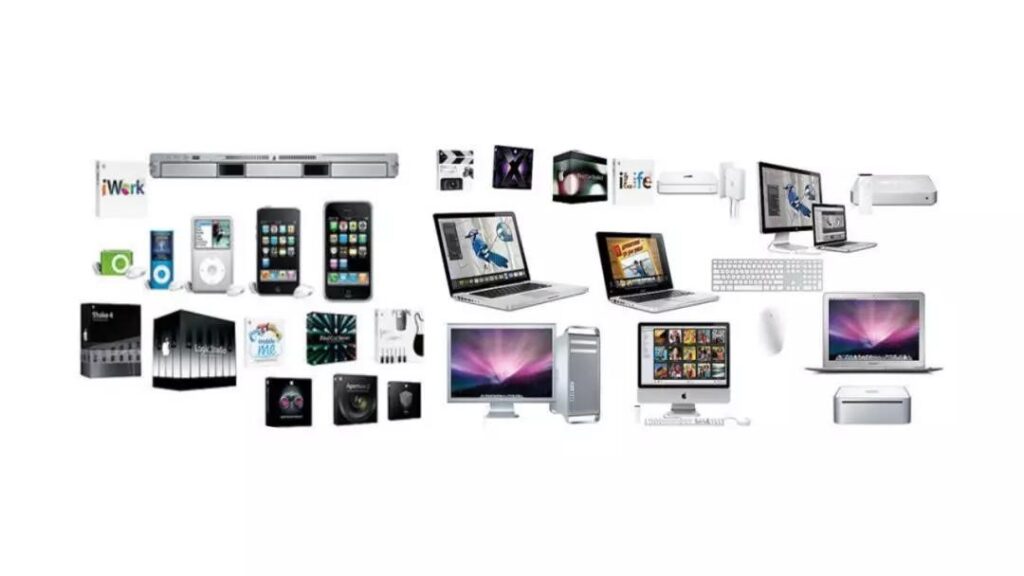
Another example is Google. Google renamed its parent company Alphabet a few years ago, which means alphabet in English.
So, let’s look at the companies under Alphabet.

In the mature period, the most important thing is to make profits through diversified products to meet the differentiated needs of consumers. So at this stage, what moat should we continue to build?
The answer is the two moats of network effects and branding.
What is the brand? A brand is actually a knife handed by a company to consumers, saying that if I dare to lie to you, you will stab me to death with this knife.
The company builds a brand and invests a lot of cost in advertising every year, which is to store value on this brand.
In case there are some problems with this brand, consumers can report this brand through online exposure, 12315 complaints, etc.
The value that this brand has kept in these years has disappeared.
So the brand is a knife handed to consumers.
It will never be the product that really gives you a competitive advantage, but the brand that continues to precipitate through the product.
The ultimate destination of the product is the brand.
What about network effects. Network effects mean that the value of a certain product to a user depends on the number of other users using the product. The more users, the more valuable, the more valuable, and the more users.
Such as WeChat.
Once the scale of WeChat breaks through a critical point to form a network effect, there will be almost no chance for other social products that are similar to WeChat.
Because as a social tool, even if the new tool is better to use, but without my friends on it, I would not use it.
This is the network effect.
In the mature period, you must continue to build your network effect and brand moats while continuing to make profits.
5. What is most important in a recession?
After the maturity period, we have to face a reality, that is, our products will eventually come to its decline.
So in a recession, what is the most important of these 6 lines?
Cost.

Because during this period, you can make the product decline more slowly by continuously reducing costs.
When Steve Jobs regained control of Apple, why would he only make a product that fits a table?
That’s because when Jobs said this, the funds on Apple’s books were not enough to support Apple’s life for three months.
So Apple must shrink its unprofitable product lines and reduce costs.
For another example, once the PC giant IBM, what did IBM do after IBM’s PC business entered a period of decline? Sold to Lenovo.
Procter & Gamble, which owns more than 200 brands, has already cut off more than 100 brands during the period of decline.
During the recession, we continue to reduce costs to delay the recession. At this time, what moat do we need to make the product decline more slowly?
It requires a moat of migration costs.
What is the moat of migration cost?
For example, two companies A and B provide services at the same time.
You are using the service of Company A, and the service assumption is 7. And B can provide 8 services.
If the migration is very smooth and there is no cost, then of course you will use B’s service. But once you migrate there is a cost in the past, you are afraid of trouble, suppose this cost is 2.
Then you won’t turn it over. After all, the value that B gives you is 8, and the cost you spend in the past is 7+2=9>8.
Forget it, don’t turn it. You think so.
This is the moat of migration costs.
The time/energy cost of users not using your product, the cost of lost assets, and the cost of relationship conversion can all allow you to dig a moat and allow users to leave you slowly.
Summarize
Products, like people and enterprises, can also be regarded as a life. There are investment period, growth period, maturity period, and decline period.
In the investment period, the ability to innovate is the most important. At this time, consider building a patent moat;
During the growth period, sales are the most important, and continue to build a moat of scale effect;
In the mature period, profit is the most important, and continue to build network effects and brand moats;
During the recession period, cost is the most important, and the cost of migration is used to slow down the decline of the product.
On the first day when we decide to make a product, we have to think clearly about how our product ultimately died.
For example, Apple launches a new iPhone every year. You can think of it as giving birth to a son, but what does it mean when he launches this iPhone?
It means that he killed the last iPhone by himself.
It’s like Apple keeps having sons every year, and then kills another son.
It sounds particularly cruel, but this is the cruel business world.
If this son is not killed by Apple itself, but by a competitor, the result will only be worse.
Finally, I want to say that although the business is getting harder and harder, it has changed from elevator mode to rock climbing mode. But when we add the timeline, you know which direction you should go in the future.
It’s like, even if you are at the starting point, your heart has already reached the other side.
